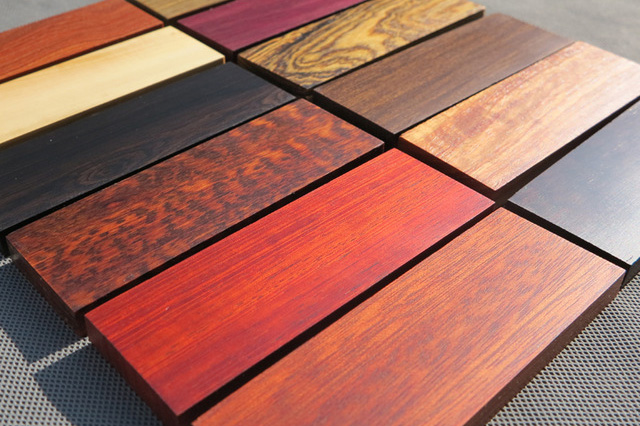For passionate home cooks seeking to elevate their culinary experience, understanding different knife styles is key to finding the perfect kitchen companion. Let’s explore four versatile Japanese knife types, each with its unique strengths and characteristics.
Kiritsuke: The Chef’s Sword
The Kiritsuke is a multi-purpose blade that combines elements of other Japanese knives:
- Shape: Long, slender blade with a straight edge and angled tip
- Uses: Slicing fish, vegetables, and meat; capable of intricate cuts
- Skill Level: Best suited for experienced cooks
- Advantages: Versatility, precision, and elegant appearance
- Considerations: Requires skill to use effectively; may be challenging for beginners
The Kiritsuke excels in tasks that require precision and offers a professional-grade cutting experience for those willing to master its technique.
Bunka: The All-Rounder
The Bunka is a general-purpose knife with a distinctive profile:
- Shape: Wide blade with a flat profile and triangular tip
- Uses: Chopping, slicing, dicing, and detailed work
- Skill Level: Suitable for all, from beginners to experienced cooks
- Advantages: Versatility, manoeuvrability, good for push-cutting
- Considerations: Shorter than some other chef’s knives
Perfect for those who want one knife to handle most kitchen tasks, the Bunka offers a balance of versatility and precision.
Gyuto: The Western-Inspired Powerhouse
The Gyuto, inspired by the Western chef’s knife, is a true all-purpose blade:
- Shape: Curved edge with a pointed tip
- Uses: All-purpose – slicing, dicing, chopping, and mincing
- Skill Level: Suitable for all levels
- Advantages: Versatility, familiar shape for Western cooks
- Considerations: Various sizes available; choose based on comfort
The Gyuto is ideal for cooks who want a familiar shape with the superior cutting performance of Japanese craftsmanship.
Santoku: The Three Virtues
The Santoku, meaning “three virtues,” refers to its proficiency in slicing, dicing, and mincing:
- Shape: Wide blade with a sheepsfoot tip
- Uses: General purpose, especially good for vegetables
- Skill Level: Excellent for beginners and experienced cooks alike
- Advantages: Well-balanced, easy to control, versatile
- Considerations: Shorter than a Gyuto; less suitable for rock-chopping
The Santoku is perfect for those who prefer a shorter, well-balanced knife for everyday use, excelling in precise, straight cuts.
Choosing Your Ideal Knife
When selecting a knife, consider:
- Your cooking style and the types of ingredients you frequently work with
- The size and weight that feels most comfortable in your hand
- Your skill level and willingness to adapt to different cutting techniques
- The maintenance requirements of different blade materials
Remember, the right knife becomes an extension of your hand, enhancing your cooking experience and helping you find joy in meal preparation. Whether you’re drawn to the precision of a Kiritsuke, the versatility of a Bunka, the familiarity of a Gyuto, or the balance of a Santoku, choose a knife that resonates with your culinary journey and inspires you to continue growing as a cook.
We also thought to include some of the most frequently asked questions when it comes to selecting your go-to knife. Here are the top 10:
- Q: Do I need a full set of knives, or can I start with just one?
- A: Start with one versatile knife like a Gyuto or Santoku. Add specialised knives as your skills and needs grow.
- Q: Santoku vs. Bunka – which should I choose?
- A: Choose Santoku for a more all-purpose knife with a rounded tip. Opt for Bunka if you want a similar profile but with a pointed tip for more precise work.
- Q: Is a Gyuto better than a Western chef’s knife?
- A: Gyutos are generally lighter and sharper, offering more precision. Choose based on your comfort and cutting style.
- Q: How do I maintain the edge on these Japanese knives?
- A: Use a whetstone for sharpening, honing steel for maintenance, and always hand wash and dry immediately after use.
- Q: Are these knives suitable for left-handed users?
- A: Many are available in left-handed versions. Double-bevel knives work for both hands, but single-bevel need to be specifically left-handed.
- Q: What’s the ideal length for a home cook’s first Japanese knife?
- A: 180mm to 210mm is a good starting range for most home cooks, offering a balance of control and versatility.
- Q: How often should I sharpen my Japanese knife?
- A: Depends on usage, but generally every 2-3 months for home cooks. Regular honing helps maintain the edge between sharpenings.
- Q: Is the Kiritsuke too advanced for a home cook?
- A: While challenging, motivated home cooks can master it. Consider starting with a double-bevel Kiritsuke for an easier learning curve.
- Q: Can these knives handle tasks like cutting through bones or frozen foods?
- A: No, use a Western-style chef’s knife or cleaver for tough tasks. Japanese knives excel at precision cutting of softer ingredients.
- Q: What’s the difference between the various steel types used in these knives?
- A: Steel types vary in hardness, edge retention, and ease of sharpening. High-carbon steels are typically sharper but require more maintenance than stainless steels.
At Oishya, we offer a range of these knife styles from respected blacksmiths in Seki and Sakai areas in Japan, in various lines such as Sakai Kyuba and Seki Kyuba. Each knife is crafted to help you realise your passion for cooking and find balance in your culinary pursuits.
































